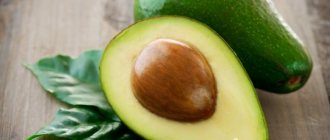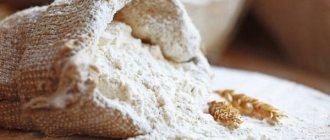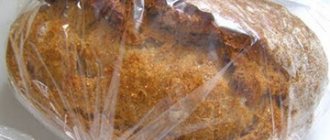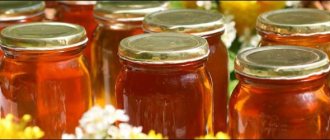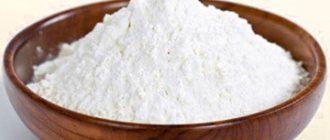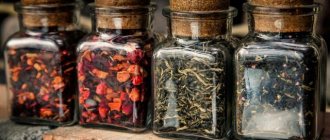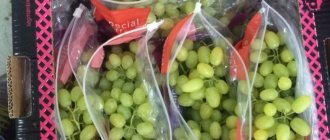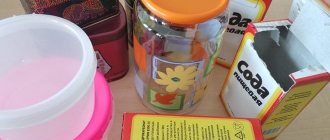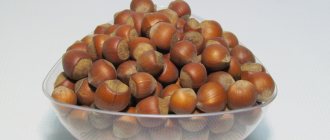Water is one of the the most common substances in nature.
It plays a vital role in the history of the Earth and the emergence of life on the planet.
She took and is taking an active part in shaping the environment - chemical and physical, weather, climate.
Water forms seas and oceans, rivers and lakes, its vapors are part of the air, it fills the cells of all living organisms.
Even human bones contain 45% moisture.
Moreover, this simple substance is an essential component when it comes to technological processes .
Shelf life of holy water
It is generally accepted that water becomes holy only once a year - January 19, on the eve of the feast of Epiphany. However, this is not at all true, priests can bless water at any time, regardless of the date, just on the holiday itself, this is of a more widespread nature. Holy water is called agiasma (Greek agiasma
- a shrine;), you can either drink it or wash your body and face with it. Many people take a teaspoon of it as a drink every day, throughout the year. According to legend, this procedure allows you to be healthy and cheerful all year long, because along with water a person receives a piece of God’s gift.
To store holy water, you can use either glass or plastic bottles or metal ones, but it is advisable to boil them before use. It is necessary that the walls of the storage vessel do not allow sunlight to pass through. The shelf life of holy water is unlimited, but it is better to use it within a year, until the next feast of Epiphany, and then replenish your water supplies.
Holy water has a unique structure, so it must be stored away from sources of electromagnetic radiation (phone, TV, computer, etc.). The ideal place to store holy water would be a room in which there are icons and church music is playing. It is not recommended to mix holy water with regular tap water, as this quickly deteriorates (a greenish tint and an unpleasant musty smell appear) and loses its healing properties.
What conditions are needed for proper storage in plastic containers?
When buying water, you need to find a place for it in the kitchen or other room. There are a number of conditions that will help preserve the liquid longer:
Keep at a temperature not lower than 15 and not higher than 30 degrees.
Place the plastic in a dark place. Protect from sun exposure.
Buy water that has been recently produced.
It is better to purchase a liquid that is made locally where you live. This will preserve the maximum of nutrients.
Pay attention to what plastic the bottle is made of.
Distilled water
Used for household, medical, technical needs. Distilled water is a liquid purified in special devices (distillers). The cleaning process removes mineral salts and trace elements. Such water has a lower boiling point (t=+100°C) and a lower freezing point (t=-10°C), also due to the absence of various impurities in it, it does not conduct current and is a dielectric.
Distilled water is widely used in everyday life for air humidification, for irons, etc., in the pharmaceutical industry, for automotive equipment as antifreeze, in windshield washers and batteries. Due to the fact that it does not contain mineral salts and trace elements, such water is not suitable for daily drinking.
Terms and conditions for storing distilled water
- In pharmacology, its shelf life is up to 3 days in refrigerators. After this period, the water becomes unsuitable for making medicines.
- In industrial production, the shelf life of distilled water is unlimited. This water is stored in closed plastic bottles, glass, ceramic or enamel vessels. Calcium chloride tubes filled with lime are inserted into the lids and covered with cotton balls to avoid a musty smell.
Aluminum
No more than 0.000001% (OFS “Aluminium”, method 1). The test is carried out for purified water intended for use in the production of dialysis solutions.
Test solution. To 400 ml of purified water add 10 ml of acetate buffer solution, pH 6.0 and 100 ml of distilled water, mix.
Standard solution. To 2 ml of a standard solution of aluminum ion (2 μg/ml), add 10 ml of acetate buffer solution, pH 6.0 and 98 ml of distilled water, mix.
Control solution. To 10 ml of acetate buffer solution, pH 6.0, add 100 ml of distilled water and mix.
Water for injections
Water for injection is an integral part of medicinal solutions; it does not have pharmacological activity. It is mainly used for the preparation of injection solutions and provides the best conditions for the compatibility of water and substrates.
If the packaging is unopened, water can be stored for 2 to 5 years - different manufacturers have different expiration dates. Therefore, pay special attention to the information on the packaging.
The shelf life is also marked on each ampoule. The optimal storage temperature for such water is from 5 to 25 °C. Water for injection is completely purified from salts and microorganisms. It is impossible to determine whether it is suitable for use or not by its appearance.
Therefore, if the expiration dates on the packaging have been erased for some reason, it is better to recycle such water. It cannot be used!
After opening the ampoule, the liquid should not be stored under any circumstances, as the substance quickly loses its sterility.
Ammonium
Not more than 0.00002% (ODS “Ammonia”). The determination is carried out using a standard solution containing 1 ml of a standard ammonium ion solution (2 μg/ml) and 9 ml of ammonia-free water. For determination, 10 ml of the test sample is taken.
Note : Ammonium ion standard solution (2 µg/ml) is prepared by diluting ammonium ion standard solution (200 µg/ml) with ammonia-free water.
Bottled water. Terms and conditions of storage
Bottled water is intended for drinking and has different shelf life - from 3 to 24 months. It all depends on the purpose of the product, preservatives and the quality of the container.
Water itself does not spoil, as it contains preservatives. The reason for the deterioration in taste is plastic dishes. Over time, the material can release harmful chemicals and make the water unsafe to drink. Therefore, you should pay attention to the shelf life specified by the manufacturer. Be sure to check whether the product is certified or not. During storage, sudden changes in temperature should be avoided.
It is better to store hermetically sealed bottles out of direct sunlight, at a temperature of +5 to +20°C.
In unsealed containers, pathogenic bacteria can develop. For this reason, the water should be consumed within a week. It is better to use glass containers for storage, since glass does not release harmful chemicals into the water. It is also necessary to exclude exposure to ultraviolet rays. If stored incorrectly, a musty smell appears and sometimes a greenish sediment forms at the bottom of the bottle, so you can no longer drink such water.
How long is it stored, how to determine this?
The period of use of medical and laboratory purified water is determined only by analysis. Its composition is being studied. If mineralization has increased and foreign chemical compounds have appeared, then the shelf life has expired.
Also, the period of use of such compounds is determined by chemical reactions . The water is exposed to special reagents that detect possible changes in composition.
The shelf life of the distilled battery composition is determined by the marking on the bottle, which indicates the day it was bottled.
It is also checked by visual inspection of the contents of the container. If there is sediment or foreign inclusions at its bottom, then such water is no longer suitable for use.
The period of application is also determined by the evaporation method. If after evaporation there are traces left on the bottom of a clean glass container, then the storage time for such a liquid has expired.
Mineral water
Mineral water passing through underground layers absorbs biologically active components, trace elements and salts. Widely used in spa treatment: for baths, inhalations, rinsing the nasopharynx. Among mineral waters, drinking waters are also distinguished.
The salt content in mineral water exceeds the permissible concentration by 3-5 times, so only a doctor can prescribe treatment with this water.
The rules for storing mineral water do not differ from the requirements for storing bottled water. With intact factory plastic containers, the shelf life is up to 1 year. In a glass bottle up to 1.5-2 years.
The exact expiration date is indicated on the manufacturer's label; always pay attention to it when purchasing a product. When the bottle is already opened, it is advisable to store mineral water in the refrigerator, closing the neck with a cork or rubber stopper, for up to 12 hours. It should also be noted that it is not recommended to place water next to strong-smelling foods, as it can absorb odors.
At home, when a bottle of mineral water has not yet been opened, it should be stored in a horizontal position (so that the cork does not dry out) at a temperature of +5 to +10°C, but not more than +15°C, avoiding direct sunlight.
The main signs of safety of bottled water:
- It's transparent.
- Does not have a musty smell.
- Contains a lot of gas.
- Pleasant to the taste.
- There is no sediment at the bottom of the bottle.
The result of incorrect storage is indicated by the following properties of water:
- Bad taste and smell.
- The water is cloudy.
- Sediment on the bottom associated with salt precipitation.
This mineral water is not suitable for consumption; instead of benefit, it will cause harm to the body.
How to erase the expiration date from a plastic bottle. How to wash a bottle
It would seem that it is not such a difficult task to wash a bottle. However, if you need to clean out a large number of recyclable containers (for example, to seal homemade wine), this can turn into a real problem. Old stains, glass surfaces stained from stagnant water, glue from paper and plastic labels, excise stamps - you'll have to tinker.
You will need
- - brush;
- — dishwashing detergent (soda, salt);
- — fine abrasive for filling the bottle;
- - acetone or solvent;
- — means for removing mineral deposits;
- - sticker remover;
- - cleaning powder;
- - warm and hot water;
- - spacious capacity;
- - knife, rag, hard washcloth.
Instructions
1
The easiest way to clean a bottle is with a good old bottle brush, hot water and a little baking soda, salt or dishwashing liquid. To prevent household chemical residues from settling on the glass cavity, rinse the bottle thoroughly under running water or in several clean waters. As you pour out the liquid, shake the bottle vigorously from time to time.
2
If complex contaminants remain on the walls of the vessel (for example, green or brown deposits of microscopic algae), you will need to resort to abrasive agents. Fill the contaminated container with sawdust (cereals, coarse sand, eggshells, etc.). If you clean bottles in the summer, then just use grass.
3
Add water to the container and shake the bottle thoroughly until the dirt comes away from the inner walls. Then all you have to do is wash and rinse the container.
4
Use a special mineral deposit remover to remove white deposits. It forms in bottles due to storing hard water in them. You can look for such a product in a household chemical store (for example, Sanox, Khimitek and others).
5
To remove the paper label, bottles are usually soaked in a large container of very warm water for several hours. To speed up the process, you can add a little dishwashing detergent to the water.
6
After soaking, some labels fall off the bottles by themselves. If a more powerful adhesive composition was used, the remaining paper will have to be cleaned off using an abrasive sponge and cleaning powder. At the same time, traces of glue will be washed off. Fill the film labels with hot water and remove them with the tip of a knife.
7
If the glue does not respond to sponge and powder, wipe it with acetone or solvent. You can also look for a specialized industrial product for removing stickers such as “Anti-vandal” or “Polycarbon Label”.
Helpful advice
Pour some clean water into the cleaned bottle - if it flows down the walls in a continuous stream, you have managed to wash the bottle clean. Liquid always forms droplets on dirty glass.
Tap water
The tap water we use every day goes through several stages of purification. But, when settling, microbes accumulate in it and white flakes may appear.
Optimal storage conditions for tap water
- Store in a plastic container in the refrigerator for up to 3 days.
- Store in glass bottles in the refrigerator for up to 7 days.
First, tap water is left to stand for 2 hours with the lid open so that the chlorine evaporates. Both bottled and tap water can be boiled if they are nearing the end of their shelf life. But, when boiling, both pathogenic and beneficial bacteria die, and the salts in the liquid precipitate.
The shelf life of boiled water is 12 hours at room temperature, not higher than +25°C.
Microbiological purity
The total number of aerobic microorganisms (bacteria and fungi) is not more than 100 CFU per 1 ml. The presence of Escherichia coli, Staphylococcus aureus, Pseudomonas aeruginosa in 100 ml is not allowed.
To analyze the microbiological purity of purified water, a sample in a volume of at least 1000 ml is taken.
The study is carried out by membrane filtration under aseptic conditions in accordance with the methods of the General Pharmacopoeia Monograph “Microbiological purity”, clause 12.
